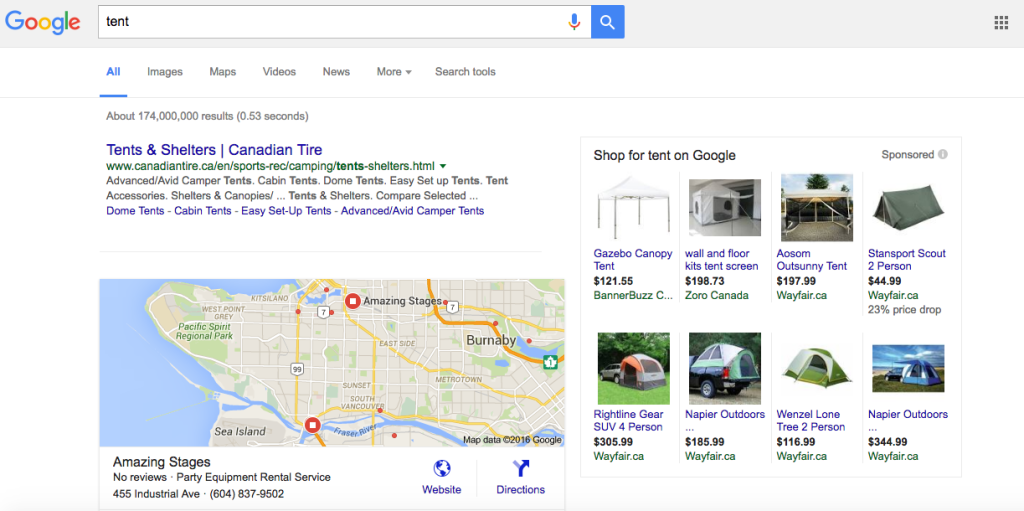Any ecommerce retailer who fails to make Google Shopping a priority is failing to take advantage of the single biggest vehicle of paid search growth. But while it’s easy enough to tick off all the boxes and be in there, simply getting listed doesn’t mean it’s going to be successful – or cost effective.
In February, Google completely restructured their Product Listing Ads and named it Google Shopping. Even as you read this, Google is constantly experimenting with new features to make Shopping even more prominent in SERP space such as testing a new Shopping carousel format that displays up to 16 products and showing Shopping ads in Google image search result pages. So it’s important to understand what has changed, and how to leverage that to your advantage.
THROWING A BUNDLE OF MONEY AT IT DOESN’T WORK
A lot of companies will get a product feed that pulls stuff directly from their website. By default, it will pull exactly what’s on your website with respect to your product such as the product title and description. This is great in the context of your own personal website where you can see everything around it. But when that’s being pulled in with lots of other similar products and competitors beside it, it gets automatically truncated (shortened) so it doesn’t always make sense. Furthermore, the truncated version is what is being scanned for keywords that match. That’s why you need to make sure the features of your product are clearly and accurately described in the product title and description so that people can find it quickly and easily when searching.
IT’S ALL ABOUT RELEVANCY
Google loves relevancy. The more relevant it is, the more people will find it when searching. And the more they use Google to find it means the more advertising Google can sell. So what makes it relevant to Google? Having the type of product, the colour, the style and material all in the description is a good start. You want it close to the front of the description as possible so it’s not lost when it gets truncated.
Use “searchable” colours. A lot of people use obscure colour names to romance or differentiate their products. While evocative, Ruby Hue or Emerald Musk are not what people will be searching for. Again, it’s fine as the description on your own site, but PLA’s convert better if it’s changed to plain language. Dark Green doesn’t sound as romantic, but if someone is searching for something that is dark green (dark green dress) it will show up as dark green and get more impressions because it’s right there. It’s making the conversion as easy as possible.
DON’T SET AND FORGET
Google Shopping is hot right now and will only grow more popular in the future.
Part of optimizing your feeds is to capture the searches you want. The other part is looking hard at the products you actually want to feature. Be selective. If you know it’s got a high CPA, (Cost Per Acquisition) then maybe don’t push your lowest priced products. Be really tailored in your approach. It’s all about supporting your campaigns. Consider creating groups and building campaigns around them. ie: you might consider grouping together all your accessories, or all your lower cost items.
Be on top of your analytics and adjust constantly. Look at which products are performing. Review what people are searching for, what’s giving you impressions and what’s not.
Google Shopping is hot right now and will only grow more popular in the future. Especially on mobile where some reports have stated that PLA phone spend and clicks grew 192% and 162% respectively in the first quarter of this year alone. But the key to leveraging this great resource is to fully optimize your shopping feeds. Otherwise you’re just wasting your money.
– – –
Written by Katherine Field
About the author
Formerly of Hootsuite, and The Biz Dojo in New Zealand, Katherine is soulpepper’s Client Relationship Manager and has her finger on all the latest changes in the world of digital marketing in order to serve her clients better.
Like what you see? Subscribe to our newsletter for more great tips and strategies to grow your ecommerce empire.







Leave A Comment